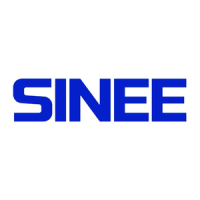
Do you have a question about the Sinee EM760 Series and is the answer not in the manual?
Guidelines for safe handling and preparation before installing the inverter.
Crucial safety measures to follow while physically installing the inverter.
Essential safety steps to take when connecting electrical wires to the inverter.
Checks and safety measures required before energizing the inverter system.
Safety guidelines to observe immediately after the inverter is powered on.
Critical safety procedures for performing maintenance on the inverter.
Safety instructions to ensure safe operation of the inverter and connected equipment.
Details on inverter models, power ratings, and technical specifications.
Procedure for checking the inverter for damage and verifying its model upon receipt.
Physical dimensions and mounting requirements for EM760 inverters.
Environmental conditions and site preparation needed for proper inverter installation.
Guidance on vertical mounting and required clearances for cooling.
Steps for removing and reattaching the inverter's protective panels for wiring.
Instructions and considerations for installing the inverter through a wall.
Standard wiring diagram for connecting external devices to the inverter.
Details on connecting the main power and motor terminals.
Methods to reduce external interference on the input side wiring.
Wiring diagrams and functions for control circuit terminals.
Instructions for wiring analog voltage and current input signals.
Diagrams for wiring multi-function input and output terminals.
Wiring procedures for RS485 communication interfaces.
Description of keys and display elements on the inverter's control panel.
Detailed steps for navigating menus and operating the inverter via the LCD keyboard.
How to upload and download inverter parameters using the keyboard.
Methods and procedures for starting, stopping, and controlling the inverter.
Step-by-step guide for initial setup, parameter configuration, and testing.
Essential checks before applying power to ensure safe and correct setup.
How to verify the inverter's status and display after power is applied.
Important considerations when selecting and configuring application macros.
Various methods for controlling the inverter's start, stop, and direction.
Overview of frequently used parameters for configuring inverter operation.
Procedure for identifying motor parameters for optimal performance.
Steps for fine-tuning and adjusting closed-loop vector control parameters.
Guidance on identifying and resolving common operational issues and errors.
Routine checks and cleaning procedures for maintaining the inverter.
Details on warranty coverage, terms, and conditions for the inverter.
Guidelines for choosing the correct braking resistor based on inverter model.
Information on selecting appropriate braking units for EM760 inverters.
Overview of available expansion cards, including I/O and communication cards.
Explanation of the structure and conventions used in the function code table.
Parameters related to fundamental inverter settings and control modes.
Parameters for advanced vector control modes, including speed and torque.
Parameters for configuring various protection mechanisms and fault handling.
Parameters for precise control of motor torque and related settings.
Parameters used for monitoring various operational states and values of the inverter.
Information on recording and displaying past fault events for troubleshooting.
